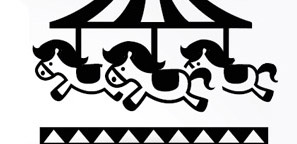The question of brand value is always an interesting one because the pace of mergers and acquisitions in telecoms sees branding occur with sometimes bewildering frequency, writes George Malim.
If you were a UK mobile subscriber in the late 1990s you had a choice of joining BT Cellnet, One2One, Vodafone or newcomer Orange. Only one of those brands still fully exists with Orange poised to disappear from the high street as a UK operator brand.
 Oddly, though, for the customer of the late 2010s, the companies behind the brands of 20 years ago will be largely unchanged. BT is in the process of re-entering the mobile market with an acquisition of EE, the Deutsche Telekom and Orange joint venture that brought T-Mobile UK – formerly One2One – together with Orange, the UK mobile operator. O2 UK, the former BT Cellnet operation, is likely to be sold to Hutchison Whampoa and merged with Hutchison’s Three UK operation.
Oddly, though, for the customer of the late 2010s, the companies behind the brands of 20 years ago will be largely unchanged. BT is in the process of re-entering the mobile market with an acquisition of EE, the Deutsche Telekom and Orange joint venture that brought T-Mobile UK – formerly One2One – together with Orange, the UK mobile operator. O2 UK, the former BT Cellnet operation, is likely to be sold to Hutchison Whampoa and merged with Hutchison’s Three UK operation.
All this washes over me because I have never changed mobile operator. I’m too lazy to assess the options, I’ve never had an experience so terrible that I feel the need to change and I assume all mobile operators are pretty much the same anyway. In spite of my laziness, this year will see me join my fourth operator.
My mobile history began at One2One in 1997 which was Cable & Wireless owned. By 2000 that brand was replaced by Deutsche Telekom’s T-Mobile brand. I wasn’t a fan of the pink and grey colour scheme but I still stuck with it. Now I’m in the two green circles of EE and poised to end up, probably early next year, on BT’s newly-branded mobile operator, which, looking at their domestic service branding, I expect to be called Infinite Infinity and have a fetching electric blue palette.
Confusion is forgivable. BT will own the businesses that were One2One and Orange, Hutchison will own the business that was BT Cellnet as well as it’s own operator, Three. Only Vodafone remains unchanged in its ownership and branding from 20 years ago and rumours persist regarding a potential break-up of that business.
This all runs against the continued exhortations of the vendor community for CSPs to protect their brands by providing excellent customer experience management, to use advanced analytics to deliver a premium brand experience and to target users with brand-oriented offerings to generate new revenue from new propositions. The point of these brand building activities is hard to grasp when the brand, by the current pattern, seems likely to be a competitor’s brand in a few years anyway.
Two schools of thought are emerging surrounding this. One is that this convoluted swapping of brands among mobile operators is simply a shuffling of the deckchairs on the sinking ship of the mobile operator sector. The other is that it’s not actually the brand that’s important. Mobile users are savvy and extremely willing to switch provider when their contract is up.
The challenge then, isn’t to have a slick brand, it’s to provide an excellent experience that takes all thought of churn out of the user’s mind.
Enjoy the magazine!






